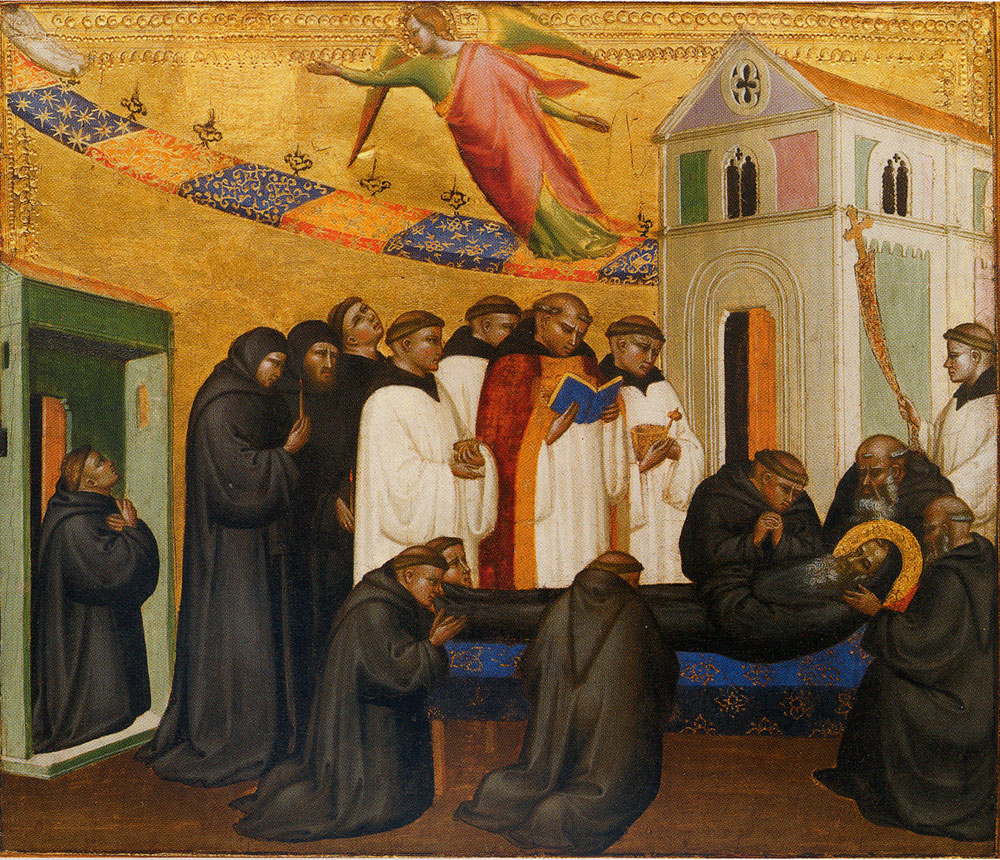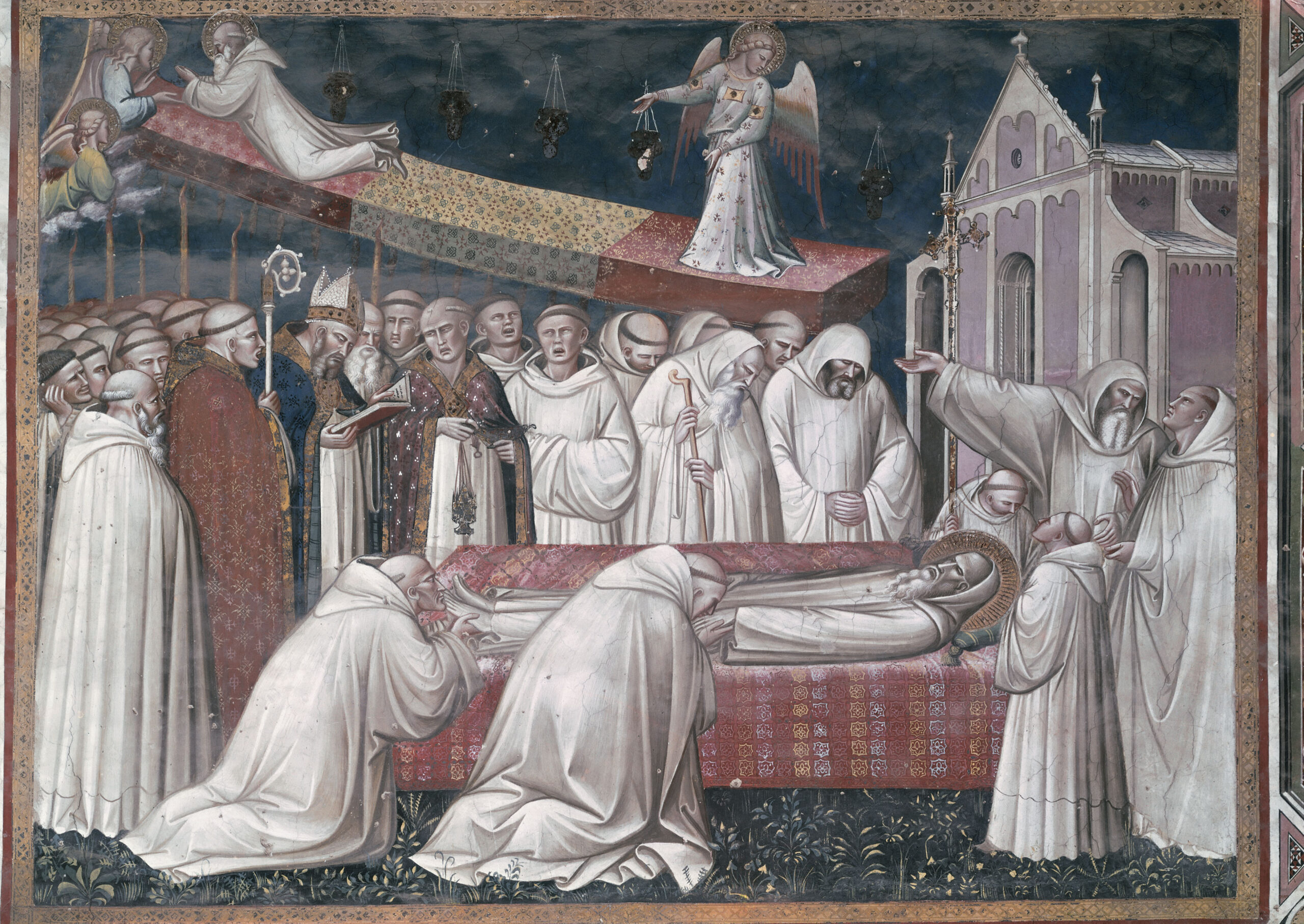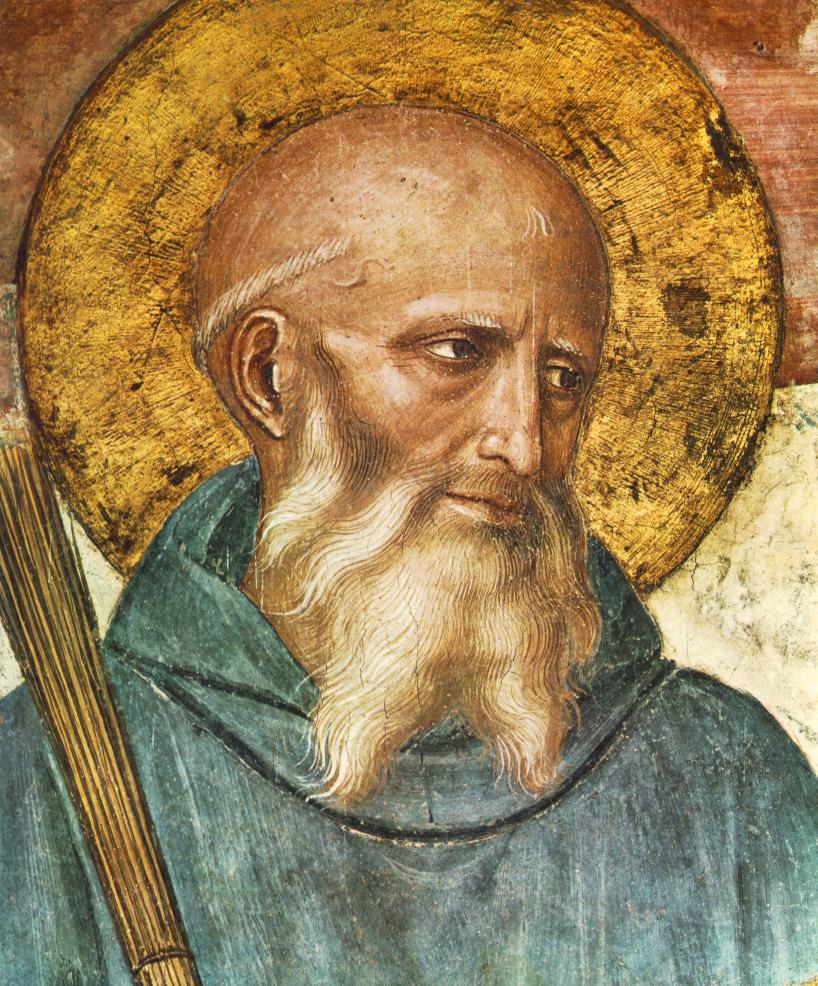By Anne Leader
St. Benedict of Norcia died on 21 March in the mid-6th century at his monastery at Monte Cassino in the Lazio region of Italy. Recognized today as the father of western monasticism, Benedict was born to a wealthy Umbrian family but decided to abandon his birthright in favor of a life devoted to prayer and meditation. After three years living as a hermit in Subiaco, Benedict was invited serve as abbot at a nearby monastery. After a thwarted assassination attempt by his hosts, Benedict decided that rather than lead existing religious communities, he would found his own according to his own rule. This disciplinary program became known as the Rule of St. Benedict, which formed the basis of numerous monastic practices in Western Christendom. Benedict founded twelve monasteries in central Italy and settled at the abbey he built at Monte Cassino, which was infamously destroyed by Allied bombers in 1944.
Giovanni del Biondo, Death of Saint Benedict, mid 14th century, tempera and gold leaf on wood
Lorenzo Monaco, Death of Saint Benedict, 1414, tempera on panel. Galleria degli Uffizi, Florence
Spinello Aretino, Death of St. Benedict, 1380, fresco. Sacristy, San Miniato al Monte, Florence
Conxolus, St. Benedict, mid 13th century, fresco. Lower Church, Sacro Speco, Subiaco
Fra Angelico, Crucifixion with Saints (detail), 1440, fresco. San Marco, Florence
Zanobi Strozzi, Maurus Saves Placidus (detail), 1435-9, fresco. Badia, Florence






